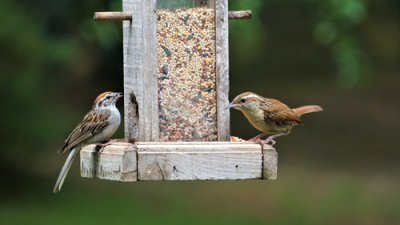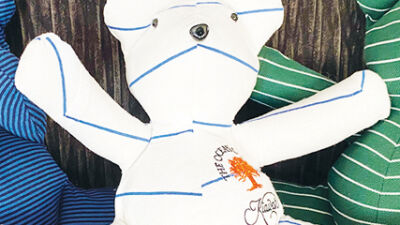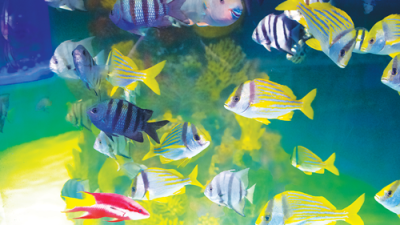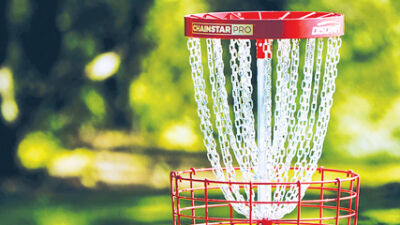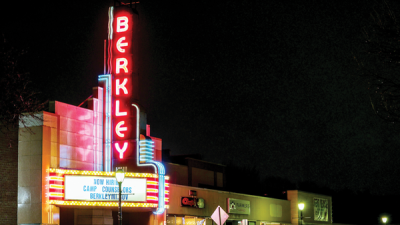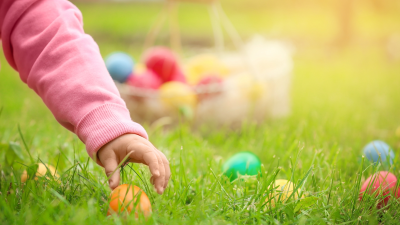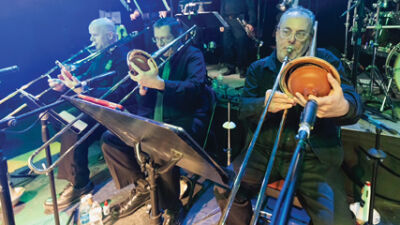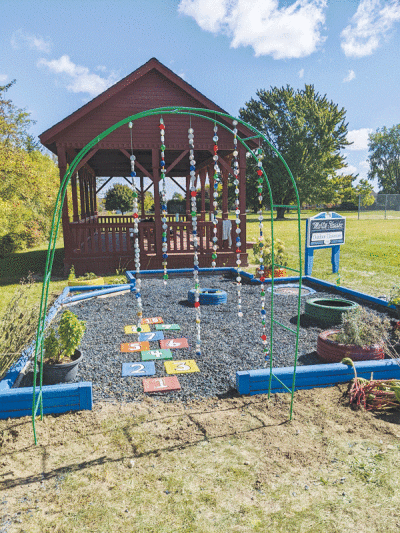
The Burr Elementary School sensory garden includes a bottle-cap curtain and hopscotch at its entrance.
Photo provided by Jennifer Swanchara
STERLING HEIGHTS — Andrea Misho, a PTO officer at Burr Elementary School and a co-adviser of the Macomb Community College Occupational Therapy Assistant student leadership organization, saw an opportunity in an underutilized space.
In place of what the Utica Community Schools district described as an “overgrown garden” at Burr Elementary is now a sensory garden that can help the entire community and especially students who have special needs.
Jeanne Poleski, Burr Elementary principal, said the school community is excited about the sensory garden.
“This is an example of being UCS Champions — our students, staff and community have come together to create a place that all people can enjoy, especially those that have sensory needs. Here they have an opportunity to play and explore with sight, sound, taste, feel and smell. They can grow fruits and vegetables, dig in tires filled with sand for buried treasures and all kinds of other sensory activities for students,” Poleski said in an email.
She said she thinks the most interesting part of the garden is how students are interacting with their senses in ways that they have not interacted with them before and that would not be available on a traditional playground.
“It’s beneficial because, for some of our students with sensory needs, a traditional playground is actually overwhelming. This sensory garden is soothing, it’s stimulating in a very positive way and not just for students that have sensory integration challenges; it’s that way for all children,” she said.
The sensory garden was created in the fall so the children had an idea of how special it would be, especially in the spring months when they will get to plant and harvest crops. MCCOTA led the project with nearly 30 volunteers putting in more than 100 hours of work. Girl Scouts Troop 77676 and the Therapeutic Rehabilitation and Vocational Training Centers also contributed.
Input from students, including Misho’s daughter, Ari, who has autism and ADHD, was critical to the garden’s development.
“Not only has the garden been a space my daughter enjoys being in, but she has also been vital in the testing of the items we’ve incorporated and has offered many ideas to the development of the garden. Being able to interact with your peers promotes emotional regulation, which many children with special needs require assistance with to further master,” Misho stated in a press release.
The sensory garden includes raised garden boxes, tires filled with sand to create sandboxes, a hopscotch entrance, a seesaw, music walls, a bottle-cap curtain entrance and a water wall. All provide input of various types and help with cognitive, motor and social skills.
“The benefits of the garden do not end when the students leave the Sensory Garden — rather, it sets them up to be better prepared for the rest of their day,” Misho stated.
Jena Courtney, a Burr Elementary third grader, said she likes the sensory garden because it has many things to do and that calm you down.
“The most interesting part is the sand because you get to feel it, and then when it’s wet, it gets nice and soft, and you get to dig things up in the sand. I think it’s beneficial because you can do lots of stuff. It has stuff to calm you down if you are upset and it’s very relaxing,” Courtney said.
 Publication select ▼
Publication select ▼


